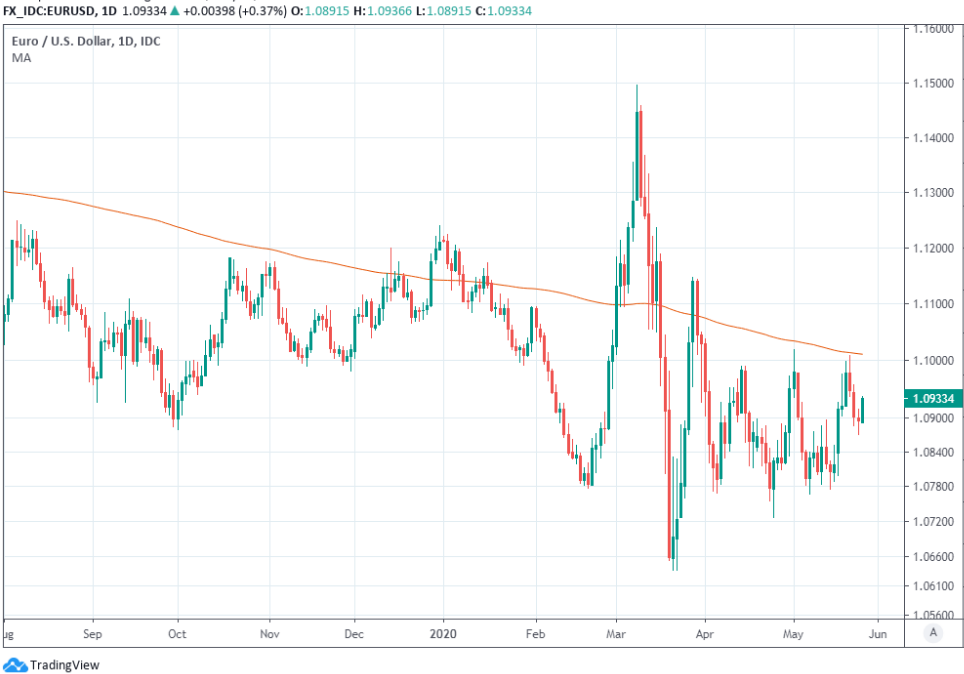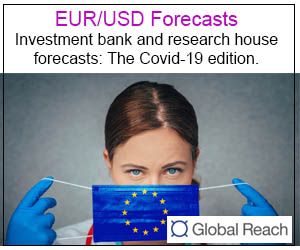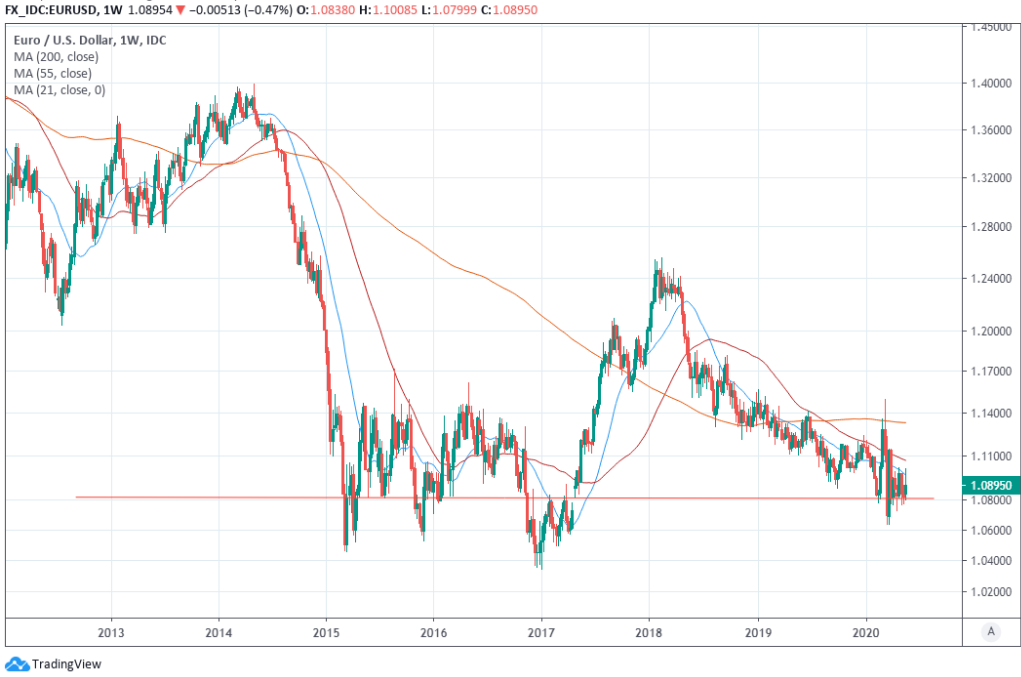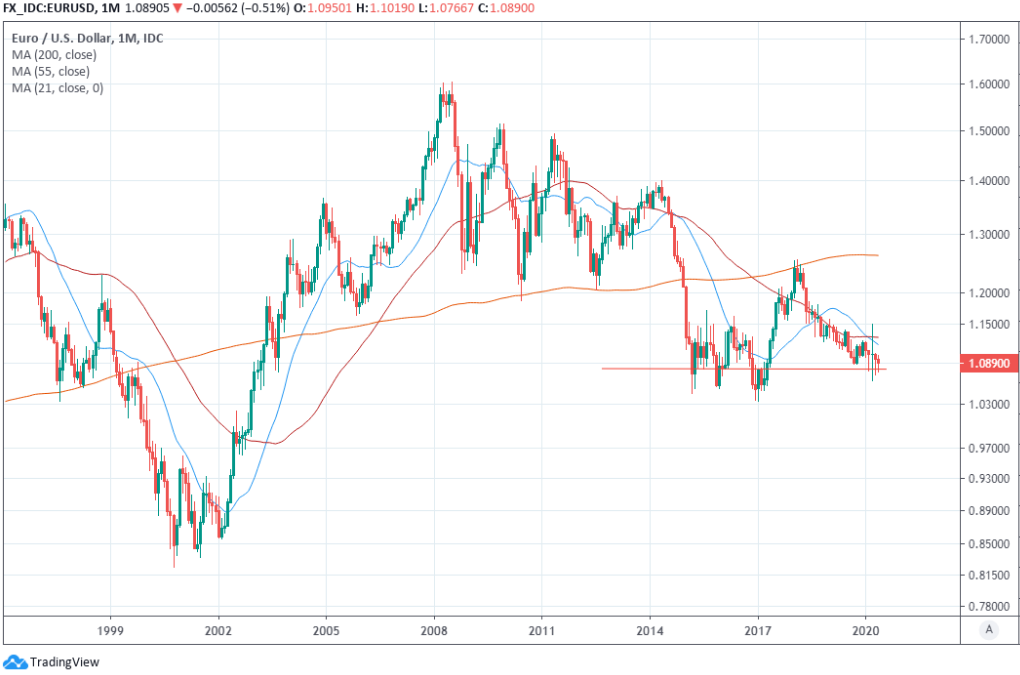Euro-to-Dollar Rate in Recovery Mode but has Drawn Short-sellers after Failure at 1.10
- Written by: James Skinner
EUR/USD sold at BofA Global Research after failure at 1.10 handle.
Economy, recovery fund risks and strong USD to weigh into year-end.
As EU politics, Brexit, U.S.-China tensions make powder keg of June.
But others see EUR/USD steadier and more resistant to the downside.

Image © European Commission Audiovisual Services
- EUR/USD spot at time of writing: 1.0896
- Bank transfer rates (indicative): 1.0515-1.0591
- FX specialist rates (indicative): 1.0733-1.0798 >> More information
The Euro-to-Dollar rate recovered the 1.09 handle and was aiming higher on Tuesday but faces technical resistance immediately overhead and is still being tipped for notable losses in the weeks ahead, which will see the single currency burdened by a powder keg of political and economic risks.
Europe's unified unit was on the offensive in a trigger-happy market Tuesday as some investors got their first opportunity to respond to events over what was a holiday weekend in both the UK and U.S. Those events included a further relaxation of 'lockdown' restrictions in some European countries, the suggestion by European Central Bank (ECB) policymaker Francois Villeroy that further monetary easing is on the way and a better than expected Ifo survey of sentiment among some 9,000 German businesses.
But the single currency will need meaningful positive momentum to overcome resistance at 1.10 and the 200-day moving-average at 1.1011 that barred its path higher last week. That rejection came as BofA Global Research advocated that clients bet on a decline from 1.0977 to 1.05 in the coming weeks, a decline that will play out as the single currency and European continent's political leaders confront what is effectively a powder keg of political and economic risk.
"EUR has been supported by the unwinding of the carry trades, as a funding currency early in the crisis, and more recently during the market rally following strong global policy stimulus, the drop of Covid-19 infection rates during the lockdown, and the Merkel-Macron announcement on the recovery fund," says Athanasios Vamvakidis, head of FX strategy at BofA Global Research. "We expect that EUR will weaken in the months ahead because of a weaker global outlook compared with consensus forecasts; a more severe Eurozone recession compared with the US; Eurozone policy constraints; periphery sovereign risks; and a long EUR market position."
This is all after France and Germany surprised markets with a proposal for the European Commission to borrow €500bn (£447bn) so it can provide grants to weaker, virus-hit members who might otherwise struggle to cover the cost of national economic shutdowns without adding so much to their debt-to-GDP ratios that they risk a destabilising rebellion in the bond markets. The Euro has a negative correlation with 'periphery' yields that rise when investors get upset.
Above: Euro-to-Dollar rate shown at daily intervals with 200-day moving-average (orange) and 55-day moving-average (red).
The proposal followed weeks of uncertainty over whether European political leaders would even act at all and as lawfare broke out between Germany's Constitutional Court and the European institutions, although the 'recovery fund' is far from being in the bag.
Monday's agreement has been hailed as a potential game-changer for the future of the common currency bloc because it could lay the foundations for an EU finance ministry, although Vamvakidis says it is not the "Eurobond" that he and many others in the market were hoping to see and that it does not address the unsustainable debt dynamics on the 'periphery' that might otherwise, some day, force a breakup or restructuring of the bloc.
"It is a fiscal stimulus in the form of a temporary increase in the EU budget, to fund country projects in the next three years. It is not debt mutualisation. If used properly, it can support the recovery, but its scope and size cannot address debt concerns in the periphery. It cannot replace the ECB after the PEPP to support the periphery spreads," Vamvakidis explains. "We believe markets will be wrong to assume that the recovery fund is a first step towards a Eurobond."
Franco-German proposals will only limit the extent to which the coronavirus crisis exacerbates unsustainable debt dynamics in Southern Europe and this is assuming that it's not "watered down," as Vamvakidis has warned that it could be, or abandoned altogether when EU leaders meet next month.
If successful the fund' might bolster the bloc's recovery and a badly depleted crisis-fighting toolbox, but it requires the unanimous endorsement of EU leaders in the European Council meeting of June 18-19 to get off the ground and some have already voiced objections.
Counter-proposals came from Austria, Denmark, Netherlands and Sweden at the weekend, advocating loans in place of grants and a two-year time limit for the programme. And the European Commission is due to set out its own ideas that build on the Franco-German proposal this week.
Above: Euro-to-Dollar rate shown at weekly intervals with 200, 55 and 21-week moving-averages. Trendline drawn at 1.08.
"Markets have become moderately more bullish on hopes of recovery from ending coronavirus shutdowns. But we continue to be more cautious, and expect FX markets to eventually reflect a more muted upturn later this year, even with more recent optimism about both the prospects for a vaccine, as well as potential developments for fiscal policy in Europe," Vamvakidis adds. "Consequently, we still expect a more risk-off type environment."
If the 'frugal' North and 'periphery' South cannot compromise, or if other political issues are allowed to prevent a decisive response to the crisis then it could prompt fresh questions about the long-term sustainability of the bloc and Euro next month. BofA forecasts a EUR/USD rate of 1.02 by the end of June, a new millenium low, and a recovery to only 1.05 by year-end. Others however, see the Euro ending next month around 1.09 before rising steadily to 1.12 by year-end.
"We saw a notable rejection from the market at levels just above 1.1000 and while that might deter upside potential, there remains reason to think the support on the downside is building. The EUR/USD range may have shifted somewhat to the upside," says Derek Halpenny, head of research, global markets EMEA and international securities at MUFG. "The shift is more about turning less negative and believing in greater downside support rather than believing in strong upside potential."
June is shaping up to be something of a powder keg for European currencies and potentially even the broader financial markets if rising tensions between the U.S. and China come to a head. The Euro often follows the Chinese Yuan. Next month's European Council meeting will also see Prime Minister Boris Johnson choose between an extension of the Brexit transition and abandoning talks in favour of fresh preparations for a 2021 'no deal' Brexit.
Only "limited progress" has resulted from Brexit trade talks so far and there is only one more round to go before that deadline, while Johnson has said previously that he could walk away from the table in June if it doesn't look like the substantial body of a deal won't be ready in time for year-end. It's widely believed that such an outcome would be terrible for Pound Sterling, although the British and European currencies are positively correlated so this scenario might also weigh on the Euro-to-Dollar rate too.
Above: Euro-to-Dollar rate shown at monthly intervals with 200, 55 and 21-month averages. Trendline drawn at 1.08
"Hong Kong risks are also now set to emerge and social unrest could return quickly. China is preparing to impose national security legislation on Hong Kong that is bound to infuriate protestors, providing the perfect excuse to restart the street protests that was a common feature before COVID-19 struck. President Trump would also have another excuse to escalate his war of words with Beijing," Halpenny says. "MUFG shifted its trading range for USD/CNY higher for the week ahead to reflect the current levels and some upside potential. These developments could well play into curtailing overall risk appetite and help stabilise the dollar after this week’s sell-of."
Europe's single currency has been trading in a tight 1.08-to-1.10 range for much of 2020 if March volatility is put to one side and the bottom has proven historically difficult to break. It has not spent much time south of 1.08 this side of the 2008 financial crisis, with only three periods spanning a total of nine months in more than a decade of trading.
The first foray was between February and April 2015. This was when the European Central Bank (ECB) began quantitative easing just as the Federal Reserve wound down its own QE programme and prepped markets for the first U.S. interest rate hike since the crisis. The second was little more than a month in late 2015 that coincided with an increase in the ECB QE programme, which weighed heavier on Eurozone bond yields just before the Fed actually lifted rates in December that year. The only other period in which the single currency sustained a break below 1.08 was the six months after President Donald Trump was elected in November 2016.
June's menu of Eurozone, Brexit and U.S.-China politics is a prospective powder keg that might yet see the 1.08 handle give way, opening the door to 1.05 or below in the process. More so given those risks dominate while the global economy is mired in a coronavirus contaminated trough. But if that toxic cocktail cannot produce a sufficiently large bang or worse, even light the fuse on the keg, then there might not be much that can do so this side of the next crisis. Whatever and whenever that turns out to be.
"If the EU authorities can demonstrate a heightened degree of political coordination, it could be a game changer in terms of the outlook for the EUR. However, it is still too early to come to this conclusion. While the risk of a dip towards EUR/USD 1.05 on a 3 month view may have been reduced, previous crisis have highlighted that European politicians are often only pushed into compromise agreements when tensions between them become untenable. Consequently we view it as too early to alter this forecast," says Jane Foley, head of FX strategy at Rabobank.








